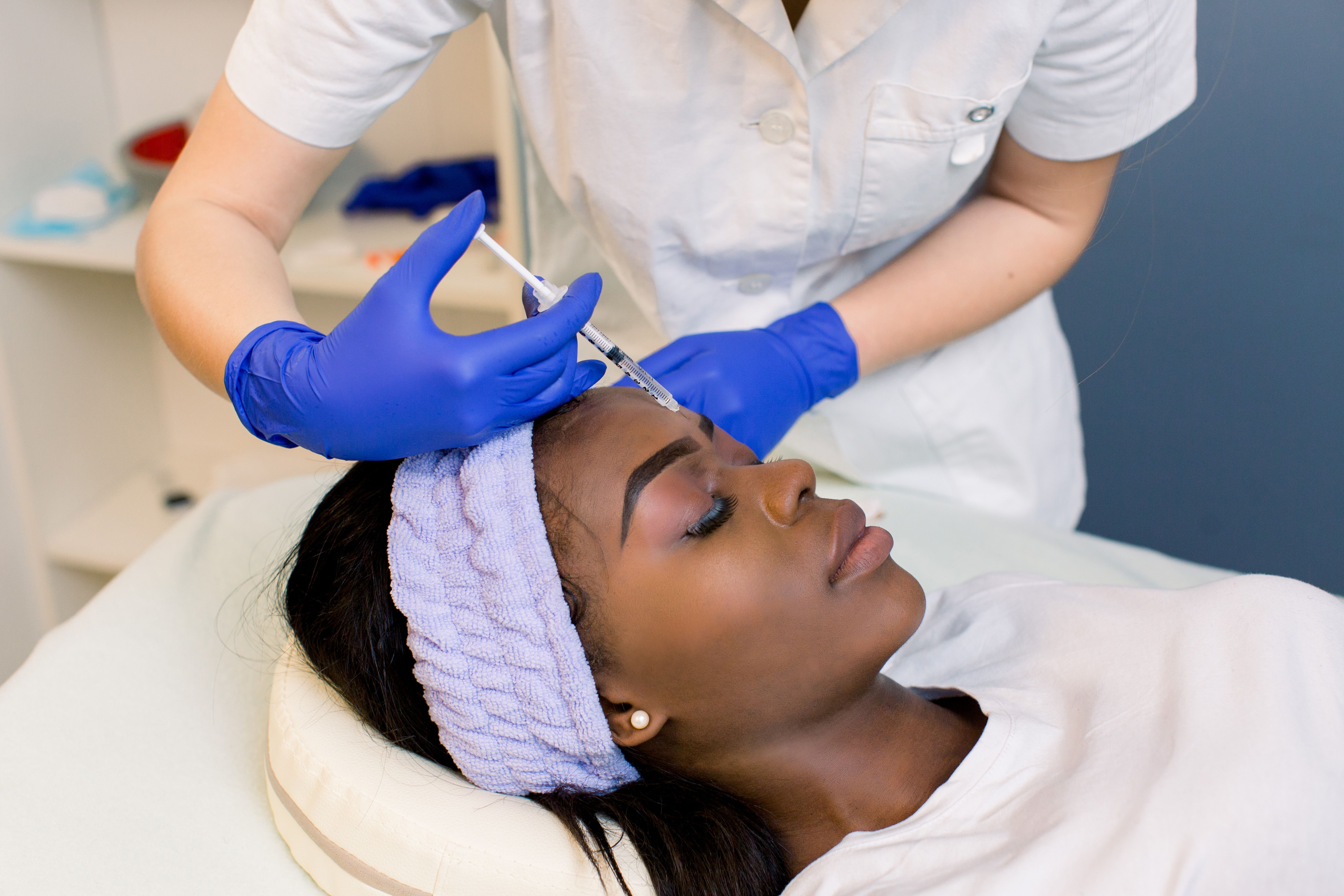- Acne
- Actinic Keratosis
- Aesthetics
- Alopecia
- Atopic Dermatitis
- Buy-and-Bill
- COVID-19
- Case-Based Roundtable
- Chronic Hand Eczema
- Drug Watch
- Eczema
- General Dermatology
- Hidradenitis Suppurativa
- Melasma
- NP and PA
- Pediatric Dermatology
- Pigmentary Disorders
- Practice Management
- Precision Medicine and Biologics
- Prurigo Nodularis
- Psoriasis
- Psoriatic Arthritis
- Rare Disease
- Rosacea
- Skin Cancer
- Vitiligo
- Wound Care
News
Article
Botulinum Toxin, Dermal Fillers Generally Effective and Well-Tolerated in Skin of Color Populations
Author(s):
In a literature review, researchers found data supporting the efficacy and safety of fillers in patients with skin of color, particularly for populations where is there is limited data.
Cosmetic injectables, such as botulinum toxin and dermal fillers, are generally considered effective and well-tolerated in patients with skin of color, for which there is often limited data, according to a review published in the Journal of Cosmetic Dermatology.1
In the United States, nearly 23.6 million cosmetic, nonsurgical, and minimally-invasive procedures were performed in 2022, according to the American Society of Plastic Surgery (ASPS) Procedural Statistics.2 Furthermore, 40% of the US population identified as a racial or ethnic minority in 2020, and the ASPS reported that individuals identifying as racial and ethnic minorities accounted for 22% of soft tissue augmentation procedures and 18% of neuromodulator procedures.3
With these statistics in mind, researchers sought to review the available literature related to the applications, efficacy, and safety of soft tissue augmentation and neuromodulators in patients with skin of color, particularly in non-Asian populations, for which there has historically been limited data in this area.
Researchers conducted a literature review of the PubMed/MEDBASE database utilizing key search terms, “botulinum toxin,” “dermal filler,” “skin of color,” and more, otherwise similar terminology. The database was combed for institutional access, English-written articles published from August 1960 to December 2020, wherein research involved greater than 20% of study participants with skin of color--or with content dedicated to discussing safety and/or efficacy in skin of color populations.
The review yielded 503 records, upon which 368 records were excluded during screening. Of the 145 full-text articles assessed for eligibility, 57 articles were excluded. In total, 88 studies were included in the literature review.
Of these articles, 50 contained what researchers deemed high-quality evidence (level I and II). The review included a total of 9,940 patients and categorized articles based on participant race/ethnicity demographics, including Asian, Black/Latinx, and combined populations.
The data indicated that injectable neuromodulators and dermal fillers are generally safe and effective in individuals from diverse backgrounds, with a larger amount of research available for Asian populations compared to Black and Latinx populations. However, there is still a lack of research specifically focusing on the effects and outcomes of these treatments in Black and Latinx populations.
Several studies, for example, explored the safety and efficacy of botulinum toxin in the treatment of glabellar lines in Asian patient populations. Botulinum toxin yielded a 94.1% response rate at maximum contraction in Chinese participants and a 88.6% response rate in Japanese participants, according to 2 randomized, double-blinded, placebo-controlled studies. In 2013 and 2016, researchers also established consensus guidelines on the use of botulinum toxin in Asian populations.
Additionally, dermal fillers have been studied extensively in Asian patient populations, with the review yielding several papers outlining the safety and efficacy of hyaluronic acid fillers for use in nasolabial folds, with significant improvements in their appearance.
However, the safety and efficacy of neuromodulators and dermal fillers has been studied to a lesser extent in non-Asian skin of color populations. The review yielded research supporting the effectiveness and safety of botulinum toxin A and hyaluronic acid dermal fillers in Black patient populations, both of which were well-tolerated with transient mild to moderate adverse effects.
"These results are supported by a more recent study showing similar effectiveness and tolerability of BTX A in Black patients compared to Whites," study authors wrote. "Interestingly, another study demonstrated a significantly greater response rate as assessed 30 days after treatment in SOC patients included in the study."
In patients of Latinx populations, there is a significant lack of robust study data on the safety and efficacy of botulinum toxin. Studies on the use of hyaluronic acid and Poly-L-Lactic acid fillers in these patients supported their overall efficacy and tolerability.
The review emphasizes the importance of considering differences in aging and cultural factors when addressing aesthetic goals among individuals from diverse racial and ethnic backgrounds, researchers noted.
"Neuromodulators and dermal fillers are useful and safe as cosmetic and anti-aging treatments in SOC populations, with the greatest amount of data supporting its use in Asian populations," according to McKenzie et al. "These injectable agents offer patients effective treatments with minimal downtime and complications. During cosmetic consultations, physicians should consider the impact of different cultural beauty norms on the aesthetic goals of diverse patient populations."
References
- McKenzie S, Wang J, Mora Hurtado AC, Uppal P, Taylor SC, Elbuluk N. Cosmetic injectables in skin of color: A review of uses, safety, and effectiveness of neuromodulators and dermal fillers. J Cosmet Dermatol. March 29, 2024. Accessed April 3, 2024. doi:10.1111/jocd.16297
- 2022 Plastic Surgery Statistics Report. American Society of Plastic Surgery Procedural Statistics. 2023. Accessed April 4, 2024.
- 2020 Plastic Surgery Statistics Report. American Society of Plastic Surgery Procedural Statistics. 2020. Accessed April 4, 2024.
















